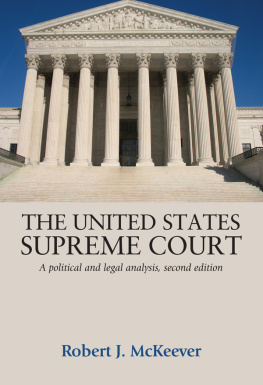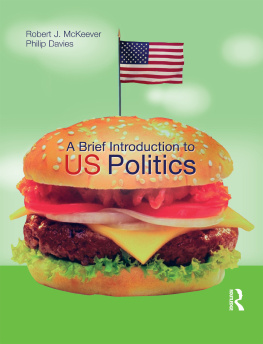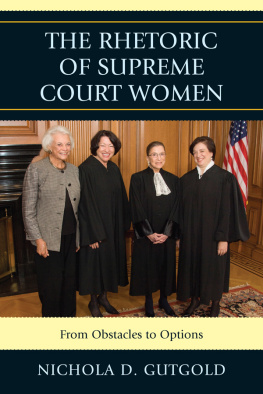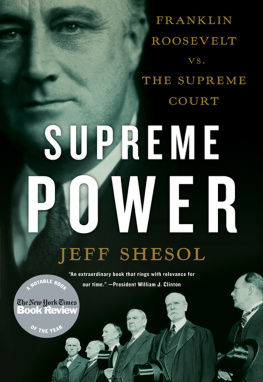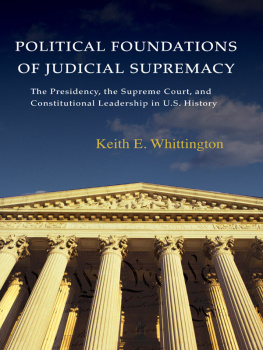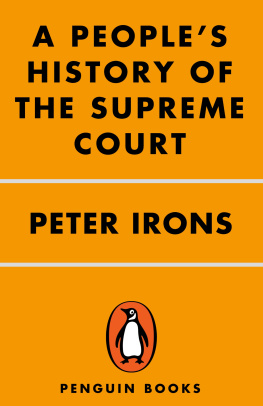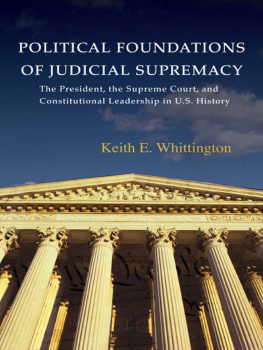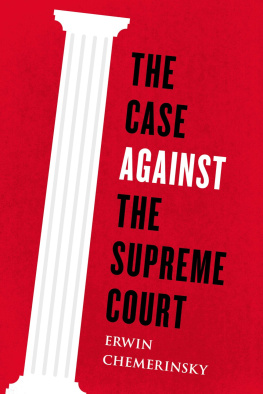Copyright Robert J. McKeever 1997, 2016
The right of Robert J. McKeever to be identified as the author of this work has been asserted by him in accordance with the Copyright, Designs and Patents Act 1988.
First edition published 1997 by Manchester University Press
This edition published 2016 by Manchester University Press
Altrincham Street, Manchester M1 7JA, UK
www.manchesteruniversitypress.co.uk
British Library Cataloguing-in-Publication Data
A catalogue record for this book is available from the British Library
Library of Congress Cataloging-in-Publication Data applied for
ISBN 978 1 5261 0732 9 hardback
ISBN 978 1 5261 0733 6 paperback
This edition first published 2016
The publisher has no responsibility for the persistence or accuracy of URLs for any external or third-party internet websites referred to in this book, and does not guarantee that any content on such websites is, or will remain, accurate or appropriate.
Typeset by Out of House Publishing
To the memory of my friend and mentor Richard Maidment. The spirit lives on.
In the years since the first edition of this book appeared, the United States Supreme Court has become even more important and controversial in American politics than ever. It has decided the outcome of the 2000 presidential election, challenged the President and Congress over the rights of detainees in Guantanamo Bay, declared a constitutional right to same-sex marriage and, by a whisker, preserved President Obamas crowning achievement, the Patient Protection and Affordable Care Act. It has been attacked by both the Left and the Right, despite having a distinctly more conservative orientation than it had in the 1990s. And appointments to the Court reflect a much sharper partisanship, even though there has been no single nomination battle to rival that of Robert Bork or Clarence Thomas.
This second edition has been thoroughly updated, to include the major decisions of the 201415 Supreme Court Term, but the structure and themes of the first edition remain. Above all, the Court continues to exhibit the same complex blend of politics and law and continues to play a vital role in American government and policy-making. More than ever, students of politics in the United States need to understand how and why the Court has acquired its role and power and why it is an indispensable feature of government in America. Hopefully this second edition will assist students to achieve that understanding.
When I was first asked to write an introductory-level book on the United States Supreme Court, I must confess to having had reservations. It was not that I had any doubts about the need for new students of American politics to understand the role played by the Court: after all, time has only added credence to Alexis de Tocquevilles famous perception in the 1830s that scarcely any political question arises in the United States that is not resolved, sooner or later, into a judicial question. But less well-known is de Tocquevilles apprehension that he might not be able to render his study of the American judiciary interesting to non-lawyers. As he put it:
But how can one make the political action of American tribunals understandable without entering into some technical details of their constitution and procedures? And how can one plunge into these arid details of a naturally arid subject, without rebuffing the readers curiosity? How can one remain clear and still be brief?
I dont flatter myself that I have avoided these different perils. Lay readers will find me too lengthy, and lawyers too brief. But that is an inevitable disadvantage of my whole subject, and of this specialised part of it in particular.
Amen to that.
Nevertheless, the aim of this book is to overcome these difficulties and to convince students and teachers of American politics that the Supreme Court is every bit as important, accessible and fascinating a topic of study as the Congress or the presidency. Certainly the problems posed by confronting readers with unfamiliar legal terminology and procedures are real, but they are not insurmountable. My own undergraduates who have studied the Court with me have proved that.
In fact, any student reading about the Court or reading its actual Opinions soon grasps the fact that while law and judicial procedure provide the framework for Supreme Court decisions, politics is often central to their substance. One cannot understand the nature and role of the Supreme Court, therefore, without an appreciation of its dual nature as a political and legal body. But it is precisely this blend of politics and law that makes the US Supreme Court a unique and stimulating object of study.
No one, I am sure, needs convincing that racial equality, abortion or freedom of the press are highly political issues in the United States. Nor is there any doubt that the Supreme Court has been a central player in the policy-making process on these matters. But the real fun of studying the Court begins with the realisation that the Justices are obliged to approach these policy issues in a manner quite different from that of the President or members of Congress, and the distinctively judicial approach to policy-making draws upon not merely legal reasoning, but large doses of political philosophy, history and social morality. To study the Supreme Court, then, is to study the interplay of American politics, law and culture when they meet in the federal courtroom.
With these perspectives in mind, I have set out the structure of the book as follows. aims to win the readers interest in the most direct fashion: it examines some of the fascinating policy issues that are central to the Court by examining its contemporary agenda. It analyses the Courts major decisions on controversial issues such as race, abortion, capital punishment and gay rights. At the same time, it addresses the vital underlying questions of how the Courts agenda is broadly determined at any given point in its history. I have not attempted to be comprehensive in my coverage of the Courts contemporary agenda, since that would require a separate book in itself, and there are already several useful texts which do just that. I hope, however, that the issues I do analyse will give the reader a good idea of the character of the Courts contemporary agenda, as well as its genesis and import for modern American government.
then takes a step back and investigates how the framers of the Constitution envisaged the nature and the role of the Supreme Court, and how and why these have evolved.
takes up the specifically judicial and legal basics of the Courts structure and processes and looks at the rules and procedures that govern the Justices work. If these are indeed, as de Tocqueville would have it, the most arid aspects of the Supreme Court, they are nonetheless vital to an understanding of the special way in which the Court operates.
examines the key concept of judicial review, the source of the Courts power. In particular, the focus is on the ways in which political considerations have become increasingly prominent in constitutional interpretation in the twentieth century and on why this development is problematic for the Courts role.

